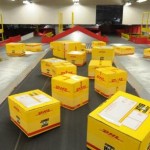 Like anywhere in the world, it is common for Ethiopians to joke about business activities. Of course, a joke can either amuse or offend an audience, depending on its nature.
Like anywhere in the world, it is common for Ethiopians to joke about business activities. Of course, a joke can either amuse or offend an audience, depending on its nature.
Sometimes humor can transmit a strong message, and is often used to indirectly express an individual’s views.
So is it with a joke that allegedly originated from an unknown source in Djibouti a few years ago to the effect of asking the rhetorical question “Are Ethiopians eating vehicles?”
Following the dispute between Ethiopia and Eritrea in the late 1990s, landlocked Ethiopia had to rely on the port in Djibouti to import and export goods. This immediately led to the service ways increasing in size and gaining importance, and they continue to be developed.
What was once a commercial gate for this tiny nation in the Horn of Africa began to devote 85 percent of its service to the neighboring Ethiopia, geographically some 30 times larger.
Among the major import items for Ethiopia via Djibouti are vehicles of varying class, and the numbers continue to increase year on year.
Simply by looking at the number plates around Addis Ababa you can gauge the steadily increasing number of new vehicles, and this applies for the whole country.
This is probably what prompted the unknown Djiboutian to make fun of Ethiopia’s car importing trend.
Apparently, the humorist had a point, as the numbers indicate the demand in Ethiopia and the state of the country’s economic progress.
Luxury versus necessity
It may be argued that having a car is in itself a luxury, or necessary to carry out one’s business, and what to choose is based on what it is needed for. The demand may reflect the general economic capability of the country or the financial capacity of an individual or institution.
But whatever the classification, the import of vehicles requires that a country has sufficient reserves of foreign currency.
As the economic base of Ethiopia is still rests on the agriculture sector, accounting for more than 80 percent, Ethiopia cannot keep relying on importing goods from abroad.
According to an assessment carried out by three university professors at the School of Mechanical and Industrial Engineering at Bahir Dar University, the condition of the automotive sector is improving and it is playing a vital role in the national economy. However, the assessment reveals that despite the significant role, it is still at ‘a low level’.
According to their study there are many reasons for this, including government regulations, road conditions, the purchasing power of people, the lack of skilled manpower, and a shortage of capital. Many imported vehicles from different parts of the world remain in daily use.
Toyota has the largest presence here, and spare-parts continue to be an expensive import resource. The main method of transport for all classes is taxis and buses, while private taxis like the three-wheeled Bajaj and TVS from India are the cheapest form of transport, mainly used by poorer people. Buses, trucks, minibuses, earth-moving equipment, luxury cars and light duty vehicles continue to be imported as used vehicles from other countries, while there is a growing trend for motorbikes, especially in the cities.
All the motorbikes are imported from India (Bajaj and TVS) and China (Lifan). The export import agencies, Djibouti port authorities and government duty all add to the value of the products, and the traders demand more profits, which results in the customers having to pay more.
As a result, importing foreign goods is measured against exporting agricultural products.
However, the big challenge facing Ethiopia is the imbalance in this regard, especially with the apparent drop in the productivity of the agricultural sector.
Because of this the import of industrial products or manufacturing items impose severe bottlenecks on the nation’s economic growth.
Over the past few years the government has been looking at possible options to begin manufacturing items locally, to reduce the imports and thus the economic burden.
In line with this the government initiated strategies aimed at boosting the industrial sector as part of its development agenda.
As a remedy, it proposed that the manufacturing sector would partially, if not fully, produce enough items to stop the need for imports.
One area deemed critical by the government due to the huge economic capacity required was the import of automotive products.
According to a study conducted by Access Capital, in 2010 Ethiopia’s annual imported foreign goods totaled USD eight billion, ranking it as sub-Saharan Africa’s seventh largest buyer of foreign goods. It makes the country among the largest markets for exporters around the world, and for many seeking business opportunities on the continent.
Among the dominant import commodities, machinery items accounted for 11 percent and vehicles eight percent. In fact, the highest share goes to fuel, which accounted for some 17 percent in the same category. In the reported period, the total amount of machinery and aircraft imported was estimated at USD 932 million, while the vehicle cost was USD 645 million, making a gross imported total of USD 1.577 billion. Mainland China, Germany and Italy took the first three positions from where the machinery and aircraft were imported. Meanwhile, the top three countries for road and motor vehicle imports were Japan, mainland China and Italy.
Even though Ethiopia does not have the economic strength or technology to manufacture complete vehicles, establishing factories to assemble cars is the best option, and it is believed that would partially reduce the economic burden.
This has opened the way for private and public companies to engage in the car assembly business, aided by reduced shipping costs. It has also brought new technological knowledge and skills to the country, vital for moving forward.
Currently, there are several private and public enterprises providing locally assembled cars to the Ethiopian market, with a few even attempting to export to neighboring countries.
Companies such as Maru Metals, Belay’ab Engineering, LIFAN, and Mesfin Engineering are paving the way in the private sector, while the conglomerate, the Metals and Engineering Corporation (MeTEC), is owned by the government.
Despite the basic objective of promoting car assembly as an economic option, the companies lament ‘the impeding’ challenges of the market. Their woes are allegedly associated with the country’s taxing system, which they believe is at an “unfair level”.
They say that the government is not treating them well on the products that they provide to the market, and are subsequently facing chronic demand shortages.
They find it difficult to compete with the ready-made car importers and suppliers in the market who only have to pay excise tax once for their vehicles, while the assemblers are subjected to double taxation – first for the imported spares and second for the assembled end products.
To put matters in perspective, for example, during importation parts of a 1000cc automobile is subjected to pay, among other taxes, 30 percent excise tax. After assembly the vehicle price will include an excise tax for the incremental value added to the car. According to an expert in the area, the main reason behind locally assembled car not being able to have a price advantage is this very excise tax factor. For the expert the tax levied on value added during assembly is inappropriate.
For many the market is somewhat unorthodox. For instance, a brand new 2014 Lifan 520 model is sold for 288,000 birr while a 1989 to 1990 Toyota Corolla locally dubbed Weyane DX model is sold between the range of 290,000 to 320,000. Similarly, a 2014 Lifan 620 model is sold for 418,000 birr while a Toyota Corolla Executive model is sold for almost the same price
They got the chance to voice their concerns a couple of week ago, as some 36 companies, including the giant MeTEC, lodged complaints before the parliament’s standing committee, calling on the government to review the existing policies and pleading for further incentives.
They said that they had faced market shortages despite having already manufactured precuts, forcing them to store the parts away.
MeTEC alone revealed that it was forced to pack away products worth some 13 billion birr.
Mesfin Engineering, Maru Metals, Belay’ab Engineering, AMCE, and LIFAN Motors all disclosed that they are facing similar problems.
Considering the critical nature of the issue, the House of Peoples’ Representatives held a joint consultative meeting with engineering companies and the beneficiaries.
During the discussion reports were presented highlighting MeTEC’s engagement in the manufacturing of automotive vehicles, tractors, agricultural tools, general motors, spares and related engineering products, and its work with small and medium enterprises.
The state-owned MeTEC, which was established three years ago with a view to lead the country’s industrial development, has been progressively welcomed into the market.
However, the corporation says it faces market shortages irrespective of its production capacity and its ability to make an impact on the market.
Outdated government policy, multiple taxation, the public attitude to locally made products and other related issues were presented as negative challenges to the sector, according to these companies.
According to MeTEC, out of the 13 billion birr’s worth of products stored, the majority, accounting for 10.2 billion birr, is agricultural aid machinery and tools.
Additionally Mesfin Engineering, Maru Metals, Belay’ab Engineering, AMCE, and AMIYO Engineering indicated that they were forced to stock products produced between 2011 and 2013 worth a combined 89.02 million birr.
“The problem that we are encountering today is not the country’s weak purchasing power, it’s because of the government’s problematic taxing and duty procedure system,” Brigadier General Kinfe Dagnew, MeTEC’s general director, told the meeting.
Kinfe accused the government of favoring importers of the same brand of vehicles, while local manufacturers are suffering from the multiples taxing system.
He underlined that as importers are paying only one tax it helps them in dominating the market.
“However, we are not asking the government to grant us tax protection; we are rather demanding equal treatment,” he said.
The Ethiopian Revenues and Custom Authority (ERCA) responded by arguing that the government had provided better privileges and tax incentives for local manufactures than to importers, but the authority did not rule out manufacturers’ complaints relating to the taxing system.
“As government policy there are clear regulations and directives authorized by the Council of Ministers aimed at the importers of vehicles. So in a bid to encourage these manufacturers, the government believe that the manufactures should not be treated equally with other importers,” Fekadu Bekele, Director of Valuation and Tariff Classification Directorate at the ERCA, told The Reporter.
According to ERCA, tariff (based on the 2007 version of the HS) Volume-II, the manufacturing sector, such as the car assembly business, is categorized under “Second Schedule Tariff” – including Schedule (A): Import Tariff at conditionally reduced rates or free of Customs duty and Schedule (B): Imports conditionally exempted from all duties and taxes.
Second schedule (A), otherwise identified as the Conditional Exemptions at Nil or Reduced Rates, outlines that the “Tariff Item” the car assembling companies are supposed to pay is five percent when importing parts to be assembled at a local assembly plant. But, according to Fekadu, this tariff item will increase to ten percent if categorized in the “First Schedule”, considered as a regularly imported item as before 2008.
“This indicates the government’s commitment to encourage local manufacturers,” added Fekadu, “but this does not mean that such incentives are enough or there is no room for improvement. This, of course, may be revised accordingly ahead of time. But it’s already stipulated that the government holds the view that manufacturers and others engaged in investment or other big sectors deserve to have the privilege to import with lesser tariffs.”
According to the ERCA’s tariff stated in the book, the custom duty is imposed on companies for importing complete or ready-made vehicles. These companies have to pay 35 percent as custom tariff and ten percent as surtax for an imported car, while local manufacturing companies are exempt from both customs tariff and surtax.
But both local manufacturers and importers indiscriminately pay excise tax and VAT according to the engine capacity of the vehicles they supply to the market.
In addition to the stated taxing, importers of complete-assembled vehicles are liable to pay additional taxes, amounting to 46 percent. Meanwhile, locally assembling manufacturers are exempt from such tax.
Still, critics argue that a lack of purchasing order and failure to conduct proper market feasibility are the major weakness of local manufactures, which could add additional setbacks on top of market-related challenges.
In fact, while agreeing with the tax complaints, Fekadu shares the view that the manufacturers often cry foul.
The market sphere is not well regulated by the government and is rather under the control of the broker, according to a sales agent speaking to The Reporter on condition of anonymity.
The agent said that the price of vehicles is largely determined by the interest of brokers, rather than by other factors such as tax and duty.
“Some brokers can make huge price differences just by the color of a particular car model, with no difference in engine or CC, and year of make,” the agent said.
The industrialization ambition, if it is to be realized, needs to have public appreciation to ensure locally assembled cars are the first choice, otherwise it will be difficult to achieve the country’s desire to make its own brand of vehicles. In addition, Ethiopia continues to suffer from the huge burden of foreign currency that hinders the pace of economic growth. Alternatively, the nation will carry on ‘eating vehicles’ – as the Djibouti humorists put it.




























Join Conversations